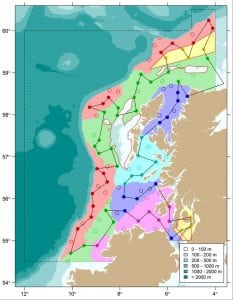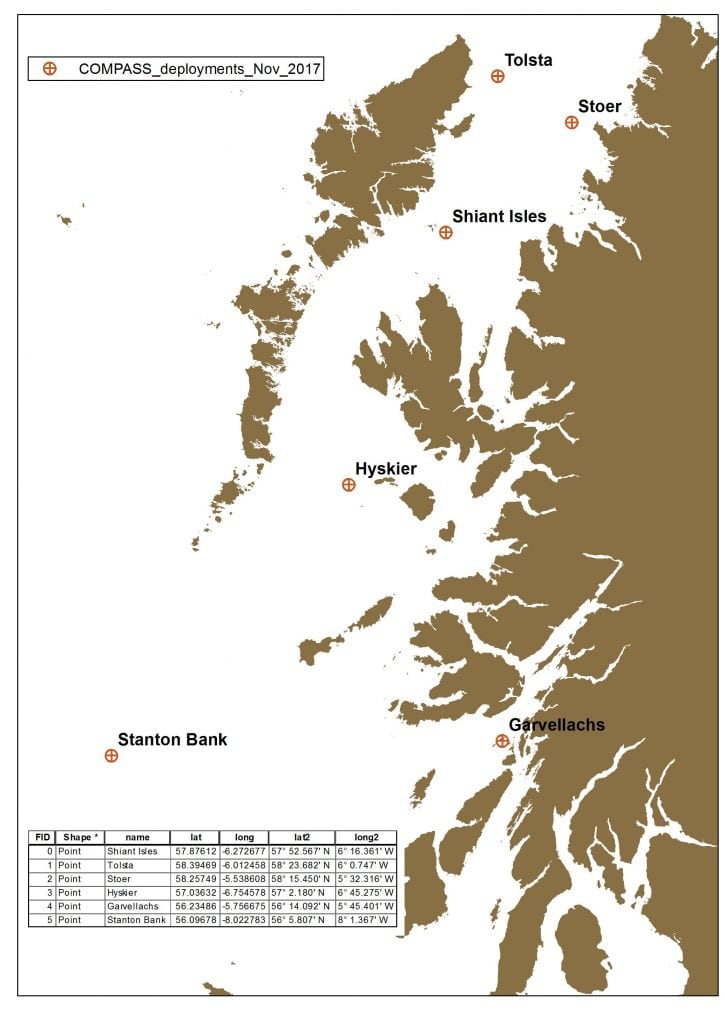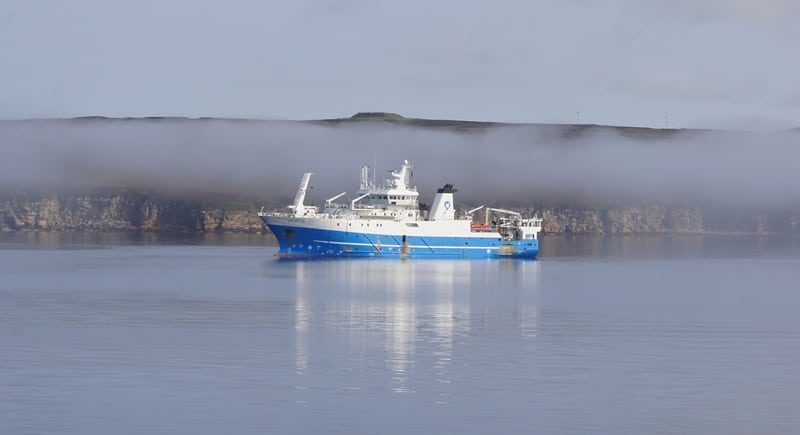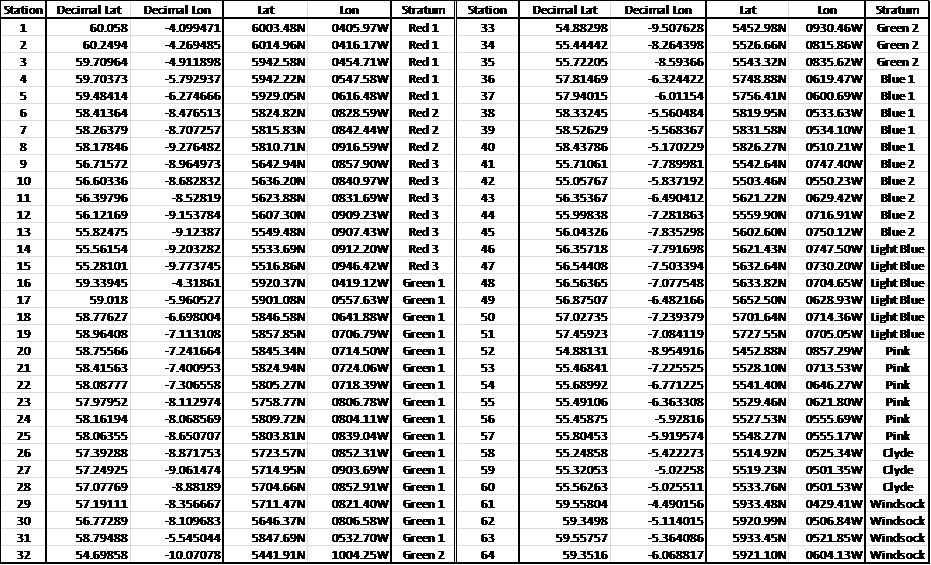Marine
Trawling for ICES in the north and west of Scotland
February 16, 2018 by Marine Directorate Communications No Comments | Category Compliance, Marine Directorate general, Marine Directorate Science, Marine Directorate Surveys, Research Vessel Surveys
Duration: 15 February – 7 March 2018
Fishing Gear: GOV Trawl (BT 137) fitted with ground gear D.
Objectives:
- Demersal trawling survey of the grounds off the north and west of Scotland in ICES Subarea VIa.
- To obtain temperature and salinity data from the surface and seabed at each trawling station.
- Collect additional biological data in connection with the EU Data Collection Framework (DCF).
- Opportunistic completion of zero hours hauls to assess unquantified time spent by the trawl on the seabed
- Opportunistic retrieval/replacement of Compass moorings deployed in November 2017.
Trawling
This is a random-stratified survey design with trawl stations being distributed within ten predefined strata covering the sampling area shown in Figure 1, right.
A total of 64 primary and 45 secondary stations have been generated. The intention is for 64 trawls to be undertaken on suitable ground as near to the specified primary sampling positions (Table 1) as is practicable, and where possible within a radius of five nautical miles of the sampling position. In the event that trawling is not possible within 5 nm of any primary station then the nearest appropriate secondary station will be used.
Hauls will be of 30 minutes duration unless circumstances dictate otherwise. Where possible, fishing operations will be restricted to daylight hours. Exact start and finish times will, however, vary slightly according to geographical location. The Scanmar system will be used to monitor the headline height, wing spread and door spread for each haul. Bottom contact data from each trawl will also be collected using the NOAA bottom contact sensor which will be mounted on a bar in the centre of the ground-gear. In addition to the routine sampling, biological data will be collected for target species in line with the EU data regulation. All fish will be processed in accordance with the protocols as described in the Manual of the IBTS North Eastern Atlantic Surveys: Series of ICES Survey Protocols SISP 15.
Subsequent to discussions at the ICES International Bottom Trawl Working Group (IBTSWG) in 2017 regarding the potential inter-vessel variability in unquantified trawl time, additional information on trawl deployment and retrieval will be recorded to better understand variability and provide an accurate estimation of the total time required for each vessel to successfully complete a 30 minute tow. Further to this and if time permits, Scotia will also undertake several zero-hour trawls, defined as starting the retrieval (hauling) process of the trawl at the exact moment that the net has settled and therefore the haul commences, hence it has zero duration. Zero-hour deployments will be completed in sets of three along a single extended and bathymetrically similar trawl track. The intent ion is, if time allows, to repeat this process on several different tracks covering a range of depths.
ion is, if time allows, to repeat this process on several different tracks covering a range of depths.
Hydrography
A CTD cast will be taken at each trawl station, weather permitting.
Compass Moorings
Six acoustic moorings were deployed at sites within the 0318S survey area in November 2017. If time allows and it is convenient to do so then Scotia will attempt to retrieve some/all of these moorings during the survey. An acoustic release system together with release codes and protocols for the retrieval of the moorings will be provided to the Scientist in Charge prior to the survey’s departure. A map displaying the mooring locations together with their positions is provided in Figure 2 (shown to the right).
Further Information:
Table 1: 0318S – Positions of primary sampling stations.
Tags: ICES, research, sampling, Scotia, Survey




Leave a comment